
Black holes may lie even closer to us than we thought, new study finds
A new study has revealed that black holes could be lurking much closer to Earth than anticipated. A black hole in space is when "gravity pulls so much that even light can not get out," NASA explains. "The gravity is so strong because matter has been squeezed into a tiny space. This can happen when a star is dying." Due to no light being present, they are invisible. Only special tools can pick up on them. There are said to be around 10 million to 1 billion mass black holes in the Milky Way, according to Science Alert. However, astrologers only know of about 20 of them. Now, a recent study has revealed that they could be a lot closer to Earth than previously thought after investigating the Hyades cluster, "a group of stars located 150 light-years away". In a statement, astrophysicist Stefano Torniamenti of the University of Padua explained: "Our simulations can only simultaneously match the mass and size of the Hyades if some black holes are present at the centre of the cluster today (or until recently). The Hyades with hundreds of stars is said to be approximately 625 million years old. Due to its packed environment, "higher rates of collisions and mergers" are expected. At 153 light-years away, it is considered the closest star cluster to Earth. Researchers were able to observe two or three black holes in the Hyades, which are either still present or ejected less than 150 million years ago and hovering around the outskirts. "This observation helps us understand how the presence of black holes affects the evolution of star clusters and how star clusters in turn contribute to gravitational wave sources," Professor Mark Gieles of the University of Barcelona said. Sign up for our free Indy100 weekly newsletter Have your say in our news democracy. Click the upvote icon at the top of the page to help raise this article through the indy100 rankings.
2023-09-11 20:16

Intelsat Invests in Lower Orbits as Musk’s SpaceX Upends Sector
Intelsat SA, the world’s biggest geostationary satellite operator, is making a series of bets on companies that focus
2023-09-11 14:29
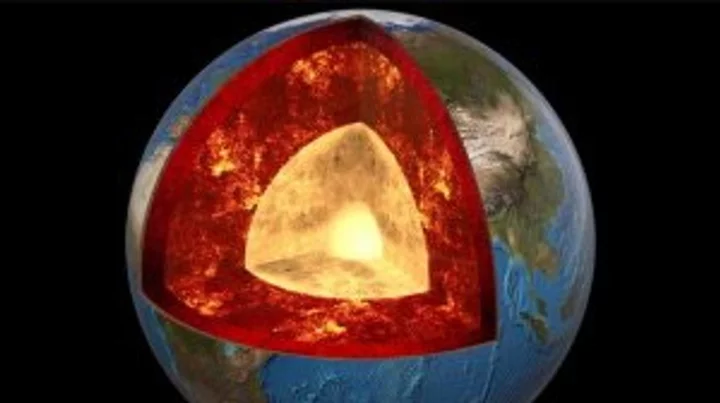
'Mountains' taller than Everest discovered on 'ancient structure' around Earth's core
A new study into the Earth beneath our feet has discovered that an ancient ocean floor structure could be wrapped around the planet's core which could be taller that Mount Everest in some areas. A brand new high-resolution mapping of the core has uncovered things that scientists previously didn't know according to a study that was first published in April. The discovery found that a thin but dense layer sits at around 2,900 kilometers below the surface at the Core Mantle Boundary where rocks meet the molten outer core of the planet. Geologist Samantha Hansen from the University of Alabama is quoted in the study saying: "Seismic investigations, such as ours, provide the highest resolution imaging of the interior structure of our planet, and we are finding that this structure is vastly more complicated than once thought." She adds: "Our research provides important connections between shallow and deep Earth structure and the overall processes driving our planet.” Hansen and her team conducted the research from 15 different stations in Antarctica by using seismic waves created by Earthquakes to create a map of what the inside of the planet looks like. The team identified the unexpected energy within seconds of the boundary-reflected wave from the seismic data. The findings show that although the layer is very thin it does spread for many, many kilometers and has been called the ultra-low velocity zone (ULVZs) due to its strong wave speed reductions. Due to the properties of the ULVZs the experts believe that the layer could vary dramatically in height. Geophysicist Edward Garnero from Arizona State University adds: "The material's thickness varies from a few kilometers to [tens] of kilometers. This suggests we are seeing mountains on the core, in some places up to five times taller than Mt. Everest." These underground mountains could play a significant role in how heat escapes from the Earth's core and power magnetic fields and volcanic eruptions. The team's studies suggest that the layer could encase all of the core but further research will have to be carried out to determine if that is the case. Sign up to our free Indy100 weekly newsletter Have your say in our news democracy. Click the upvote icon at the top of the page to help raise this article through the indy100 rankings.
2023-09-10 19:21

AC/DC: The Tesla–Edison Feud
You’ve probably heard about the famous rivalry between Nikola Tesla and Thomas Edison—both giants of electrical engineering whose innovations changed history. But what exactly was their history with one another?That whole boss/employee thing. Tesla, a Ser
2023-09-10 16:21
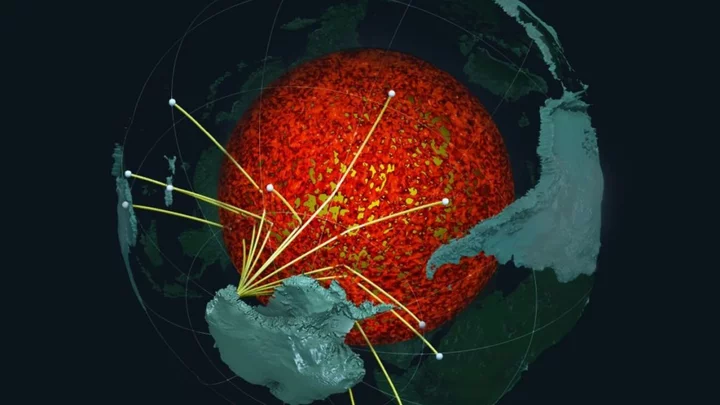
Underground 'mountains' discovered on Earth's core five-times taller than Mt. Everest
A new study into the Earth beneath our feet has discovered that an ancient ocean floor structure could be wrapped around the planet's core which could be taller that Mount Everest in some areas. A brand new high-resolution mapping of the core has uncovered things that scientists previously didn't know according to a study that was first published in April. The discovery found that a thin but dense layer sits at around 2,900 kilometers below the surface at the Core Mantle Boundary where rocks meet the molten outer core of the planet. Geologist Samantha Hansen from the University of Alabama is quoted in the study saying: "Seismic investigations, such as ours, provide the highest resolution imaging of the interior structure of our planet, and we are finding that this structure is vastly more complicated than once thought." She adds: "Our research provides important connections between shallow and deep Earth structure and the overall processes driving our planet.” Hansen and her team conducted the research from 15 different stations in Antarctica by using seismic waves created by Earthquakes to create a map of what the inside of the planet looks like. The team identified the unexpected energy within seconds of the boundary-reflected wave from the seismic data. The findings show that although the layer is very thin it does spread for many, many kilometers and has been called the ultra-low velocity zone (ULVZs) due to its strong wave speed reductions. Due to the properties of the ULVZs the experts believe that the layer could vary dramatically in height. Geophysicist Edward Garnero from Arizona State University adds: "The material's thickness varies from a few kilometers to [tens] of kilometers. This suggests we are seeing mountains on the core, in some places up to five times taller than Mt. Everest." These underground mountains could play a significant role in how heat escapes from the Earth's core and power magnetic fields and volcanic eruptions. The team's studies suggest that the layer could encase all of the core but further research will have to be carried out to determine if that is the case. Sign up to our free Indy100 weekly newsletter Have your say in our news democracy. Click the upvote icon at the top of the page to help raise this article through the indy100 rankings.
2023-09-09 19:49
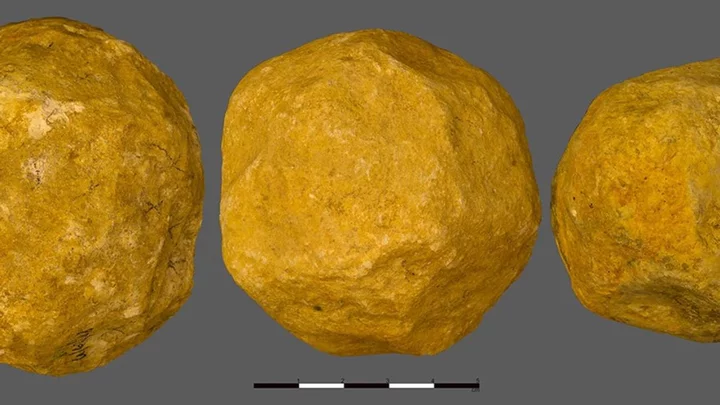
New study shows that early humans deliberately made stones in spheres
A study of 150 stones dating back 1.4m years shows early humans were deliberately crafting spherical shapes – but nobody knows why. The Hebrew University of Jerusalem made findings after analysing the limestone balls which were unearthed in Ubeidiya, a dig site in Israel’s Jordan Rift Valley. Scientists have previously speculated that the stones, which were discovered in the 1960s and serve no discernable purpose, became round after being used as hammers. But the university’s team reconstructed the steps required to create the so-called spheroids and found they were part of a “preconceived goal to make a sphere”. The researchers used 3D analysis to retrace how they were made based on the markings and geometry of the spheroids. They concluded that the objects were intentionally “knapped”, the technique used to shape stone by hitting it with other objects. Antoine Muller, a researcher at the university’s Institute of Archaeology, said: “The main significance of the findings is that these spheroids from ‘Ubeidiya appear to be intentionally made, with the goal of achieving a sphere. “This suggests an appreciation of geometry and symmetry by hominins 1.4 million years ago.” Early humans clearly had some reason for making the balls, but what exactly that is remains a mystery. He said: “We still can’t be confident about what they were used for. A lot of work needs to be done to narrow down their functionality.” Sign up to our free Indy100 weekly newsletter Have your say in our news democracy. Click the upvote icon at the top of the page to help raise this article through the indy100 rankings.
2023-09-09 00:29

'Ancient river' on Mars found containing 'shark fin' and 'crab claw'
NASA's Perseverance rover picked up some intriguing-looking objects on Mars this week, which prompted all kinds of speculation on social media. The photo in question was captured on 18 August as Perseverance travels over an "ancient river" and was voted the space agency's top image of the week. On X/Twitter, NASA wrote: "As promised, here’s the new Image of the Week, as voted by you! This rocky duo was spotted hanging out together in a wind-swept area. I spy a…crab claw? Shark fin?" The post was soon flooded with users' takes, with many claiming the two boulders mirrored a shark fin and a crab claw. "I don't know why, but those rocks are really satisfying to look at," one person wrote, while another joked: "I vote for coffee bean." Meanwhile, one realist responded: "That’s literally two rocks." The Perseverance rover landed on 18 February 2021, after a 7-month journey from Earth that started in the summer. The robot has since provided the world with stunning visuals – one of which captured the hearts of social media users. Last year, the rover acquired a pet rock friend on its back wheel, that continued to hitchhike months into its journey. Perseverance likely picked up the large stone in Jezero Crater, which is a 45 kilometer-wide crater thought to have once been filled with water. "The Perseverance rover has a pet rock. NASA says it's breaking hitchhiking records," one person said at the time, while another added: "There's a small rock that's been hitching a ride inside one of the metal wheels of a Mars Rover and I gotta say Perseverance's Pet Rock is a kid's book in the making." Sign up for our free Indy100 weekly newsletter Have your say in our news democracy. Click the upvote icon at the top of the page to help raise this article through the indy100 rankings.
2023-09-08 23:55

Why was Only Up removed from Steam?
The viral gaming hit Only Up has been surprisingly removed from gaming platform Steam with the creator of the title citing "stress" as the reason. Only Up became a big hit with gamers on various streaming platforms earlier this year with players attempting to complete the seemingly easily but hard-to-master platformer which involved a character scaling various objects higher and higher into the sky. However, the game has now been pulled from Steam's storefront so it's creator who goes by the alias of SCKR Games can focus on their next title, which according to IGN has a codename of Kilth. In a statement, SCKR Games said that Only Up is "a game I did for creativity, to test myself, and where I made a lot of mistakes." They added: "The game has kept me under a lot of stress all these months. Now I want to put the game behind me." "What I need now is peace of mind and healing. I plan to take a pause, and continue my education in game design and further with new experience and knowledge to direct my energies to my next game with the working title ‘Kith’ — it will be a new experience and a new concept with realism, a completely different genre and setting, and the emphasis is on cinematography. “This time I hope the project will be created by a small team. This is a challenging project on which I want to significantly improve my skills in game design.” The game had been removed from Steam back in June and later returned in July after copyrighted assets from another developer managed to get into the game but was soon resolved. It's unknown whether the game will return to Steam at a later date but its page remains available on the website although it cannot be purchased. Sign up for our free Indy100 weekly newsletter Have your say in our news democracy. Click the upvote icon at the top of the page to help raise this article through the indy100 rankings.
2023-09-08 23:18
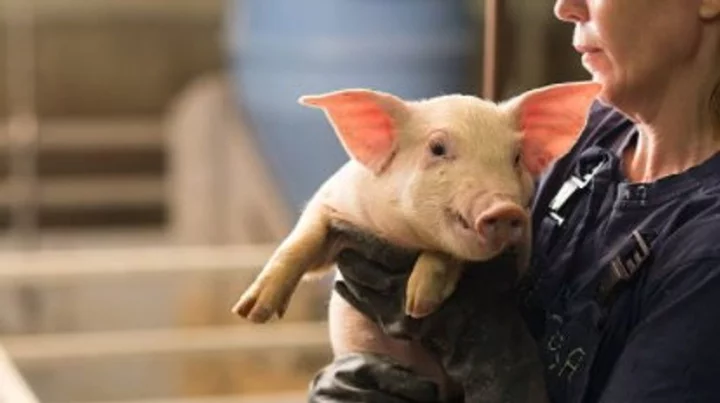
Scientists grow human kidneys inside a pig for the first time
Scientists have grown human kidneys in pigs, for the very first time. Researchers at the Guangzhou Institutes of Biomedicine and Health, Chinese Academy of Sciences and Wuyi University created human-pig chimeric embryos containing a combination of human and pig cells. When they transferred into 13 surrogate pig mothers, they developed kidneys that contained mostly human cells at a rate of 50 to 60 per cent, giving hope for potential transplants in the future. “Rat organs have been produced in mice, and mouse organs have been produced in rats, but previous attempts to grow human organs in pigs have not succeeded,” said the senior author Liangxue Lai. “Our approach improves the integration of human cells into recipient tissues and allows us to grow human organs in pigs.” The kidneys were not entirely human as they included vasculature and nerves made mostly from pig cells, meaning they could not be used for transplantation in their current form, but it is still a pretty impressive step. And apart from the kidneys, the embryos were dominated by pig cells, with very few human cells in the brain or central nervous system. Making brains using human and pig cells is very controversial for ethical reasons, so there are tight regulations for this kind of research. Meanwhile, pig cells tend to outcompete human cells during development, so previous experiments have created embryos that are almost entirely pig. The latest work, published in Cell Stem Cell, overcame this by genetically engineering a single-cell pig embryo so that it lacked two genes needed for kidney development. This created a gap within the embryo that could be filled by human cells. “We found that if you create a niche in the pig embryo, then the human cells naturally go into these spaces,” said Prof Zhen Dai of Guangzhou Institutes of Biomedicine and Health, another senior author. The scientists said that being able to incubate a fully human kidney inside a pig would be likely to take many years. “We would probably need to engineer the pigs in a much more complex way and that also brings some additional challenges,” said Miguel Esteban, also of the Guangzhou institute and a senior author. A central challenge would be to allow human nerves and vasculature to develop within the target organ without nerve cells developing in the central nervous system that could lead to a humanised brain. “Even theoretically it’s not clear how you’d do that,” said Ilic. Sign up to our free Indy100 weekly newsletter Have your say in our news democracy. Click the upvote icon at the top of the page to help raise this article through the indy100 rankings.
2023-09-08 19:52

Solar Is Keeping the Texas Grid Running. Next Month’s Eclipse Will Be a New Test
Texas quickly spiraled into a power emergency on Wednesday night when record September demand and a drop in
2023-09-08 19:19

Human embryo created without using sperm or eggs
Scientists in Israel have created a model of a human embryo from stem cells, without using sperm, eggs or a womb. A team at Israel's Weizmann Institute of Science made the model, which resembles an embryo at day 14, when it acquires internal structures but before it lays down the foundations for body organs, and the work was published in the journal Nature. But the scientists involved said it would take a long time yet to create an embryo from scratch. Team leader Jacob Hanna said the team took stem cells derived from adult human skin cells, as well as others cultured in the lab, then reverted the cells to an early state.They then manipulated them to make a model of an embryo, rather than an actual or synthetic one. "The question is, when does an embryo model become considered an embryo? When that happens, we know the regulations. At the moment we are really, really far off from that point," Hanna said. However, they said the work could open the door to new ways to test the effect of drugs on pregnancies, better understand miscarriages and genetic diseases, and maybe grow transplant tissues and organs. "They are not identical. There are differences from human embryos, but still, this is the first time, if you open an atlas or a textbook, you can say - yeah I can really see the similarity between them," said Hanna. "In about 1 percent of the aggregates we can see that the cells start differentiating correctly, migrating and sorting themselves into the correct structure, and the farthest we could get is day 14 in human embryo development," he said. Their next goal, Hanna said, is to advance to day 21 and also reach a threshold of a 50 per cent success rate. Magdalena Żernicka-Goetz, a professor of development and stem cells at the University of Cambridge, said the study joins six other similar human embryo-like models published from teams around the world this year, including from her lab. "None of these models fully recapitulate natural human development but each adds to ways in which many aspects of human development can now be studied experimentally," she said. Sign up to our free Indy100 weekly newsletter Have your say in our news democracy. Click the upvote icon at the top of the page to help raise this article through the indy100 rankings.
2023-09-08 18:27
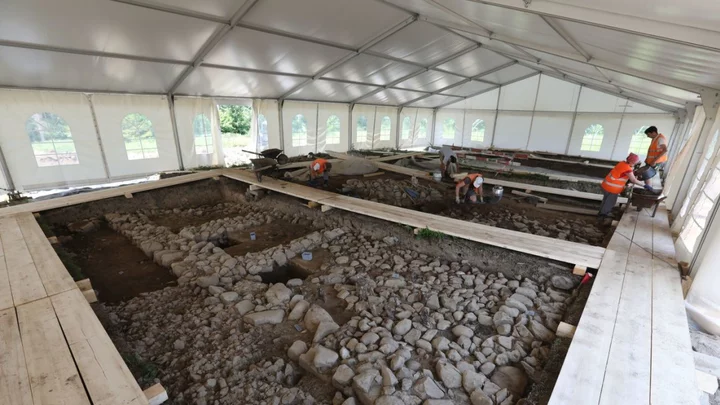
Discovery in Swiss Alps called an 'archaeological sensation'
The remains of 2,000-year-old Roman walls have been discovered by archaeologist in Switzerland in the foothills of the Alps. During the excavation of a gravel pit in Cham in the canton, or state, of Aug in central Switzerland, the walls, which once protected a Roman building complex, were found. Other pieces have also been unearthed by archaeologists, include a plaster wall, iron nails, and gold fragments. As well as items such as bowls, millstones for grinding, glassware, and crockery and ceramic jugs known as amphorae. In a statement form the Office for the Preservation of Monuments and Archeology, the findings were labelled an "archaeological sensation" for the region and could shed light on Roman activity in central Switzerland. Gishan Schaeren, head of the Department of Prehistory and Protohistoric Archaeology said in the statement: "Roman buildings of similar dimensions were last excavated in Cham-Heiligkreuz almost 100 years ago. We were also amazed that the top bricks were even visible above ground." The walls extend over an area of at least 5,300 square feet (500 square metres). Although it's unclear how Romans used the site, including whether it was a "villa with a view or a temple building," said professor of archaeology of the Roman provinces at the University of Bern Christa Ebnöther. The team said that findings of Roman tableware known as terra sigillata - which means "sealed earth" in Latin - were found, suggesting elite people were at the site. The amphorae, which typically held liquids such as wine, olive oil and fish sauce, are evidence that Romans in the region traded with those in the Mediterranean. Archaeologists also found several copper and bronze coins, including a silver denarius minted by Julius Caesar from the first century B.C. The discovery of the Roman walls is not the first ancient find in the area. Previously, archaeologists had found remains of a middle Bronze Age settlement, burials from the late Bronze Age, and a number of coins form the era of the Celts. Sign up to our free Indy100 weekly newsletter Have your say in our news democracy. Click the upvote icon at the top of the page to help raise this article through the indy100 rankings.
2023-09-08 17:26
